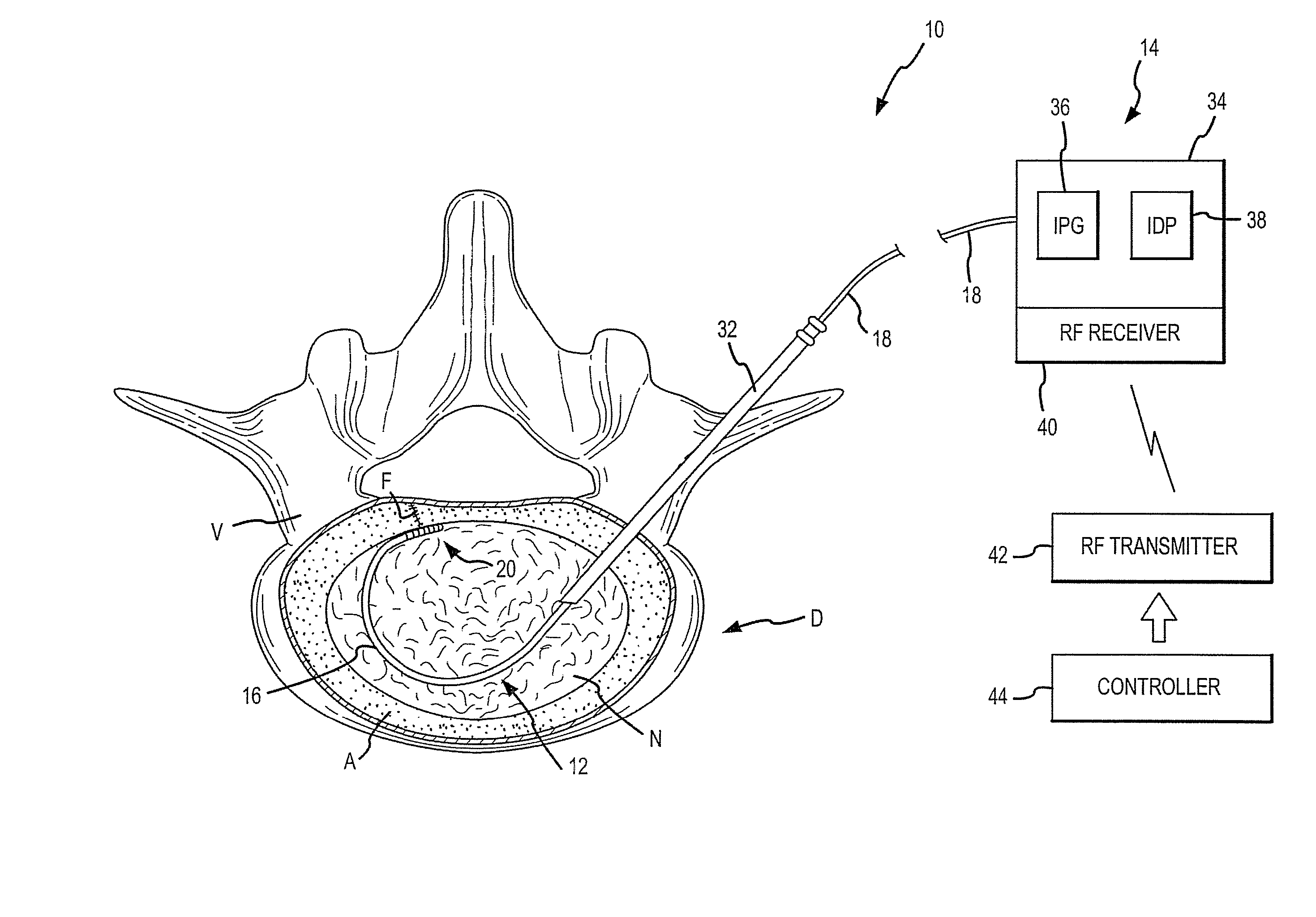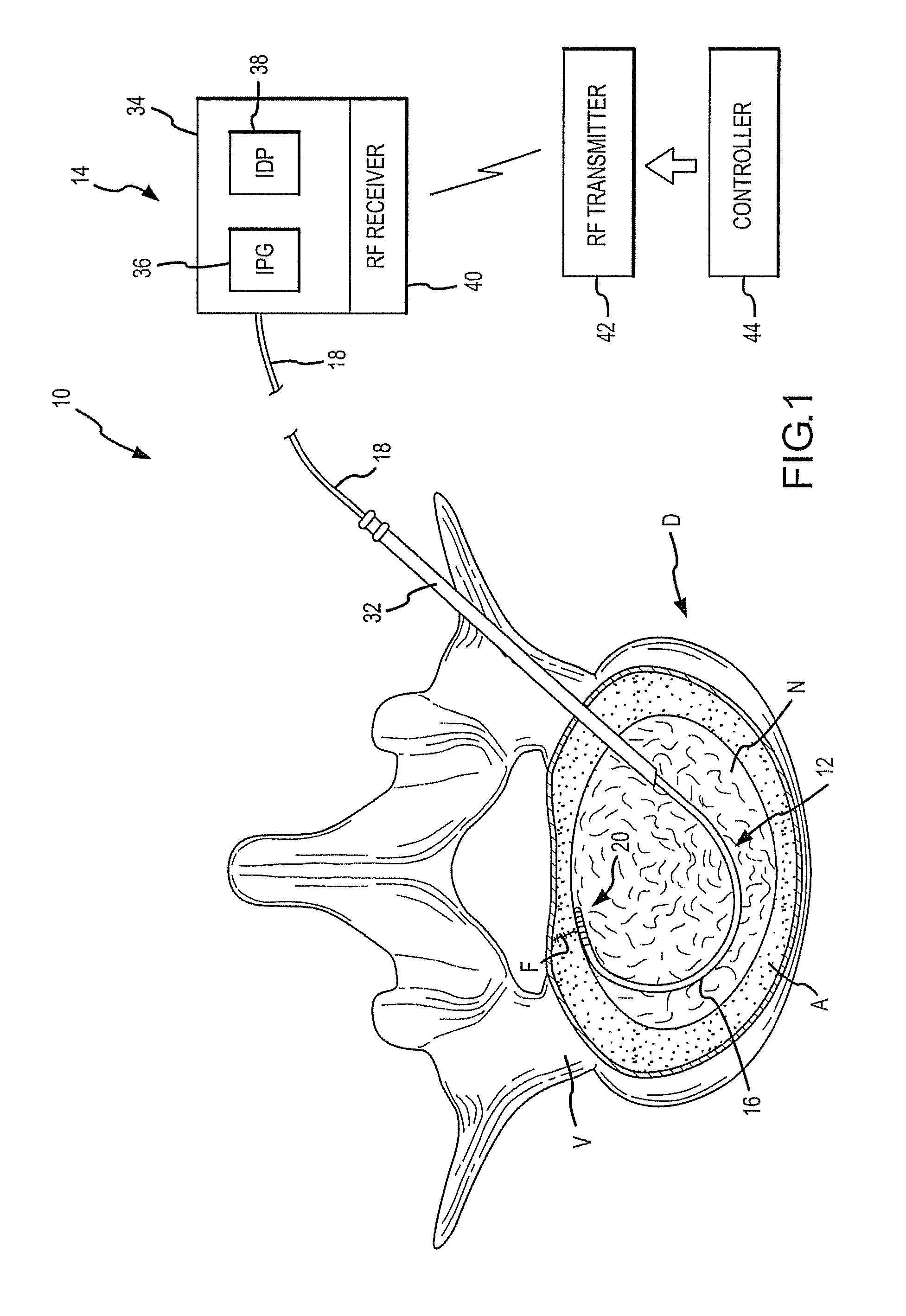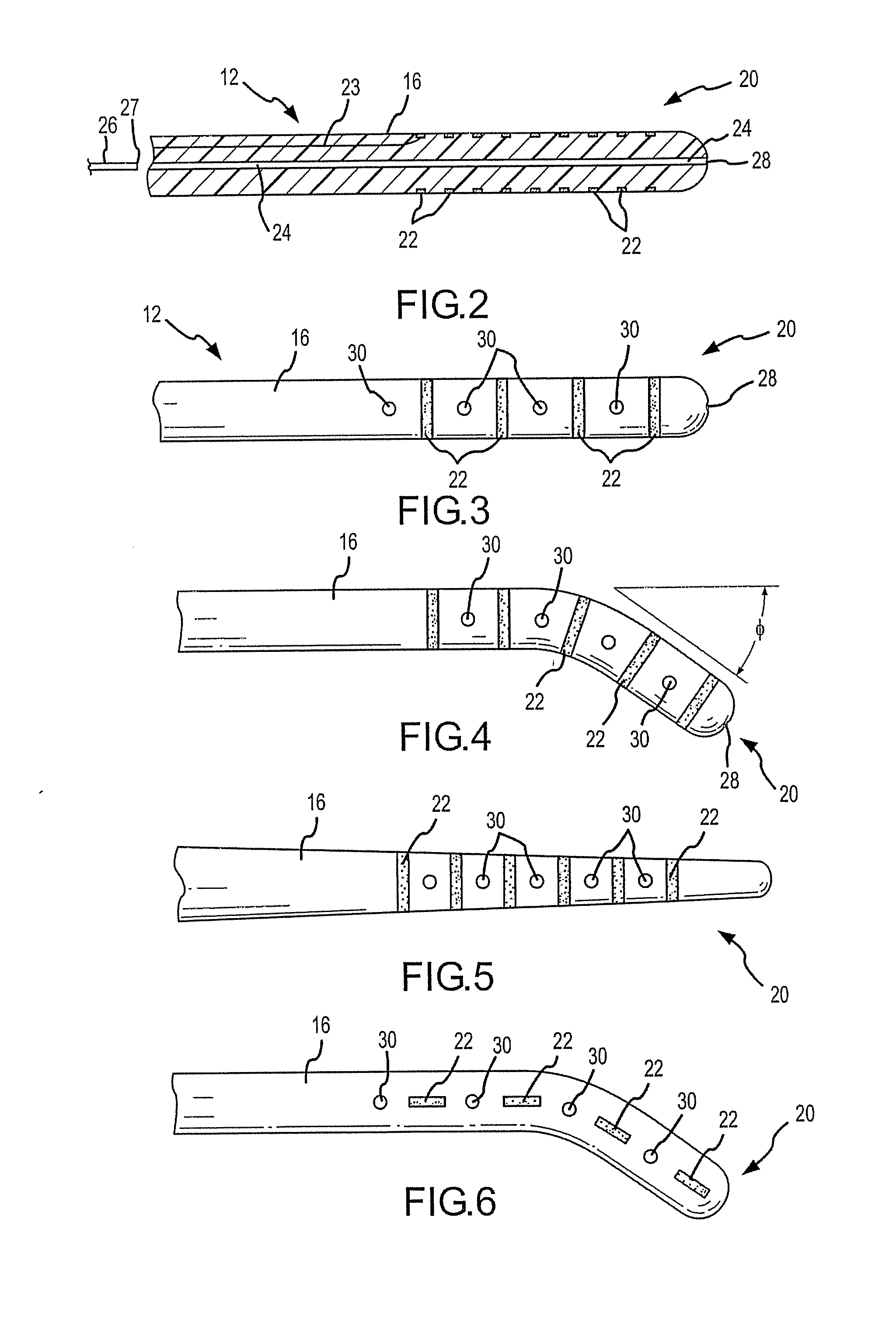Combination Electrical Stimulating and Infusion Medical Device and Method
a technology of electrical stimulation and infusion catheters, which is applied in the field of medical devices and infusion catheters for treating medical conditions, can solve the problems of nerve tissue in the disc to generate pain signals, limited ability of the disc to heal or regenerate, and chronic pain in many patients, so as to prevent inadvertent buckling or displacement of the lead, reduce the risk of infection, and prevent backflow of infusion material
- Summary
- Abstract
- Description
- Claims
- Application Information
AI Technical Summary
Benefits of technology
Problems solved by technology
Method used
Image
Examples
first embodiment
[0090] Referring specifically to FIG. 2, in the stimulation lead, a plurality of circumferentially extending electrodes 22 are positioned at the distal portion 20. The electrodes 22 are also spaced longitudinally along the distal portion 20. The electrodes produce an array of electrical field energy, and the target tissue is immersed in the electrical field. One or more electrical conductors 23 extend through the interior of the stimulation lead 16 in order to transmit the electrical impulses to the electrodes 22. It is preferable to utilize a single conductor 23 along the major length of the lead, and then provide branch conductors (not shown) at the distal portion 20 that then extend to contact the various electrodes. The branch conductors could be a linearly arranged set of wire extensions extending between each electrode, or any other advantageous combination of wire conductors to interconnect the electrodes. Use of a single conductor is a more robust design as opposed to multip...
embodiment 310
[0154] Referring to FIG. 65, this alternative sheath embodiment 310 is characterized by a very flexible body 312 having a plurality of slots or openings 314 formed therein. A distal end of the body 312 includes a tip 316. The tip can be blunt or sharp, depending upon the intended use. Referring to FIG. 66, electrodes 318 are cylindrical shaped sections that are slipped over the body 312, in the same manner as disclosed with respect to FIG. 59. However, in the case of FIG. 66, a bracket 320 is used to interconnect the electrodes from the reusable stimulation lead with the electrodes 318 formed on the sheath. As shown, the bracket 320 may include a pair of traverse flanges 322, sidewalls 326, and base 328. Accordingly, a channel 324 is formed between the sidewalls and base. The bracket 320 is placed in a corresponding slot 314 such that the flanges 322 rest on the outer surface of the body 312. When the electrode 318 is slipped over the body 312, the electrode 318 is aligned such that...
PUM
 Login to View More
Login to View More Abstract
Description
Claims
Application Information
 Login to View More
Login to View More - R&D
- Intellectual Property
- Life Sciences
- Materials
- Tech Scout
- Unparalleled Data Quality
- Higher Quality Content
- 60% Fewer Hallucinations
Browse by: Latest US Patents, China's latest patents, Technical Efficacy Thesaurus, Application Domain, Technology Topic, Popular Technical Reports.
© 2025 PatSnap. All rights reserved.Legal|Privacy policy|Modern Slavery Act Transparency Statement|Sitemap|About US| Contact US: help@patsnap.com



